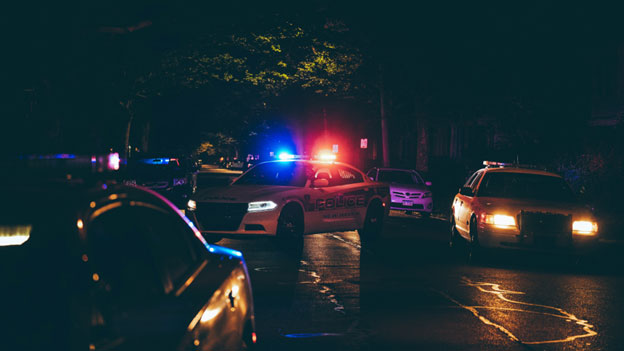
by Kourosh Nikoui | September 18, 2024 | Crime Scene Investigation & Reconstruction
Introduction
Crime scene investigation (CSI) is a crucial part of modern law enforcement, where forensic investigators, crime scene investigators, fingerprint experts, forensic photographers, and other forensic scientists work together to collect, analyze, and preserve evidence. The collaborative effort ensures that the evidence is accurately gathered and interpreted, helping to identify suspects, determine facts, and uphold the integrity of the investigation.
Crime scene investigators face several potential issues during the process that can affect the success of their investigation and create legal challenges. To avoid these pitfalls, CSIs must follow strict protocols and maintain a high level of professionalism. This article explores key concerns in crime scene investigations, including contamination of evidence, poor documentation, chain of custody violations, and more, as well as the solutions to address them.
Contamination of Evidence
One of the most significant concerns for forensic investigators at a crime scene is the potential for evidence contamination. When evidence is mishandled, or protocols are not followed, the integrity of the evidence can be compromised. This is particularly important for forensic analysts who handle DNA, blood samples, and trace elements that are highly sensitive to contamination.
Crime scene investigators must wear protective gear such as gloves, masks, and shoe covers to prevent contamination. Additionally, forensic photographers and forensic scientists must document the crime scene in its original state before any evidence is moved or collected, ensuring that no accidental interference occurs.
Poor Documentation
Accurate documentation is vital for crime scene reconstruction and legal proceedings. Forensic photographers play a critical role in capturing high-quality images of the scene, providing a visual record of the evidence. Along with photographs, crime scene investigators must take detailed notes and sketches of the scene, describing the condition and location of each piece of evidence.
Without comprehensive documentation, it becomes difficult to explain the sequence of events to a jury or judge. Forensic examiners rely on these details to make conclusions about the evidence and support their findings in court.
Chain of Custody Violations
The chain of custody refers to the chronological documentation that records the handling, transfer, and storage of evidence. Any break in this chain can create doubts about the authenticity and integrity of the evidence, leading to legal challenges. A fingerprint examiner, for instance, must ensure that the fingerprint samples collected are properly labeled, stored, and tracked to maintain their admissibility in court.
To avoid chain of custody violations, crime scene investigators need to meticulously log every movement of evidence. From the moment a fingerprint expert collects a print, to its analysis in the lab, the chain of custody must remain unbroken.
Lack of Training and Expertise
Forensic investigators require extensive training to effectively collect, process, and analyze evidence. A poorly trained crime scene investigator or forensic analyst can misinterpret evidence, fail to follow proper procedures, or mishandle critical information, weakening the credibility of the investigation. Specialized training is necessary for roles such as fingerprint analyst, forensic photographer, or DNA expert.
Ensuring that CSIs receive continual education on updated techniques, new technology, and legal standards helps reduce errors and increases the accuracy of investigations.
Tampering with Evidence
Deliberate tampering with evidence is a serious legal issue that undermines the legitimacy of a crime scene investigation. If there is any suspicion of tampering, the entire case could be called into question. Forensic scientists and fingerprint examiners must work with integrity, maintaining strict ethical standards to ensure that all evidence is preserved in its original form.
Misinterpretation of Evidence
Misinterpreting evidence can lead to incorrect conclusions. For example, a fingerprint expert may fail to correctly match prints, or a forensic analyst might misinterpret bloodstain patterns, leading to false accusations or missed opportunities to find the real perpetrator. Collaboration between forensic experts ensures that evidence is thoroughly reviewed, reducing the chances of misinterpretation.
Legal Compliance Issues
Forensic investigators must adhere to legal procedures and regulations regarding evidence collection and handling. If CSIs fail to follow these protocols, the evidence may be deemed inadmissible in court, weakening the prosecution’s case. Staying up-to-date on legal standards ensures that crime scene investigators maintain the credibility of their work and avoid legal complications.
Conclusion
Crime scene investigations require teamwork, attention to detail, and strict adherence to established protocols to ensure success. From forensic photographers to fingerprint analysts, every role plays an essential part in gathering and interpreting evidence. By avoiding common pitfalls such as contamination, poor documentation, chain of custody violations, and lack of training, crime scene investigators can strengthen their cases and ensure that justice is served.
A commitment to maintaining integrity, ongoing education, and collaboration between forensic professionals is key to resolving legal challenges and ensuring the reliability of evidence presented in court. Ultimately, crime scene investigation, when conducted properly, plays a critical role in uncovering the truth and securing convictions that hold up under legal scrutiny.
Here are some suggested references and further reading materials that offer valuable insights into crime scene investigation, forensic analysis, and related procedures:
These resources provide comprehensive knowledge on the methodologies and challenges in crime scene investigations, including contamination prevention, legal procedures, and forensic analysis techniques.
Forensic Practitioner and Specialist Kourosh Nikoui, Principal Consultant and CEO of Nikoui & Associates, Forensic Identification Services & Consulting, Inc., has over 38 years of full-time experience in forensic science and criminal justice with various law enforcement agencies, government and private entities. Mr. Nikoui, a court-qualified expert, is a Certified Latent Print Examiner, Certified Senior Crime Scene Analyst, and Certified Forensic Photographer by the International Association for Identification. He has testified as an expert witness over 150 times in California Superior and U.S. Federal Courts, processed evidence in over 30,000 criminal and civilian cases, and served as a consultant to numerous law enforcement agencies. Mr. Nikoui holds a BFA degree from USD and is an active member of multiple forensic science organizations. He can be reached directly by calling (866)439-6753 or by email at [email protected]